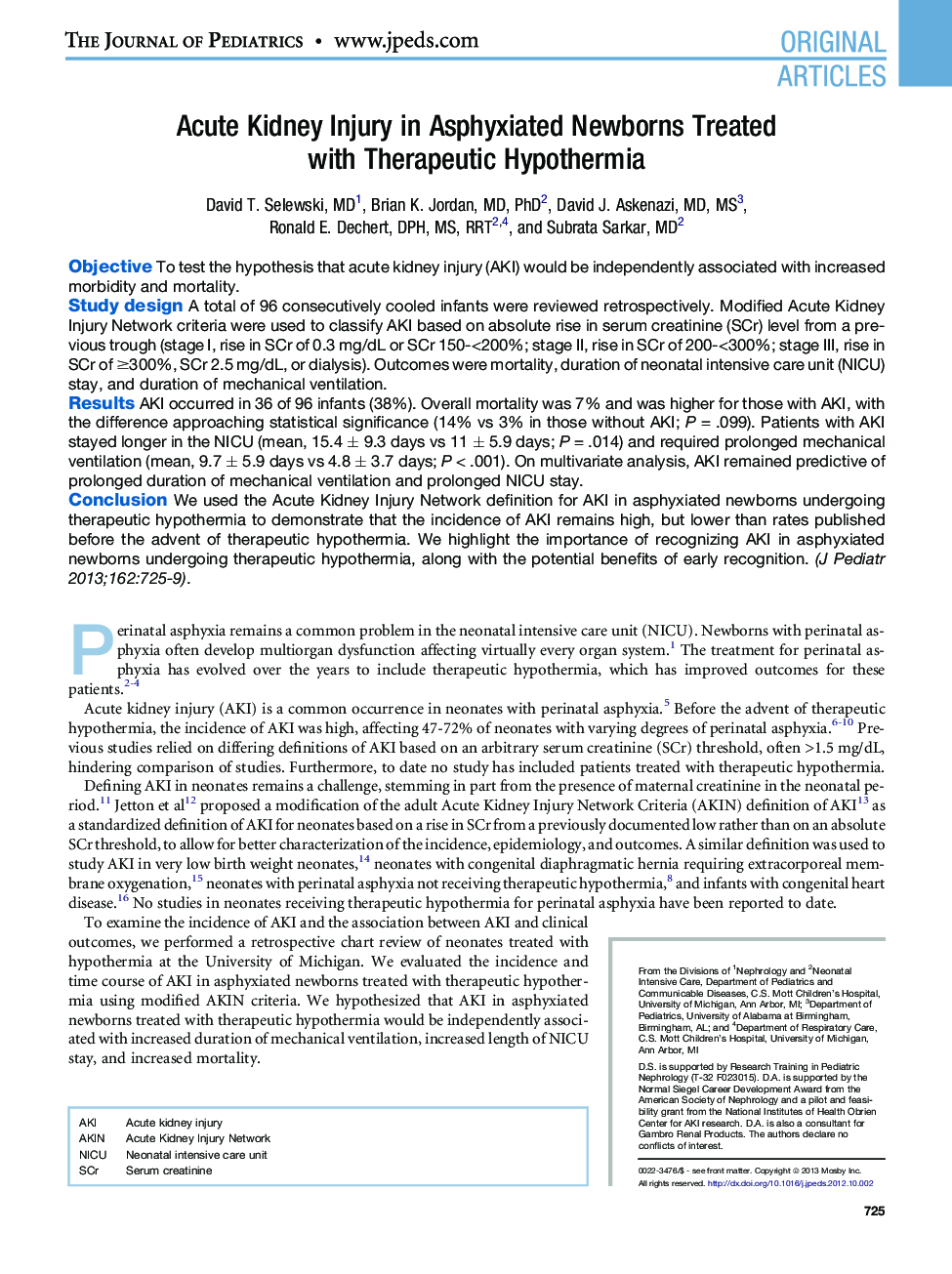| Article ID | Journal | Published Year | Pages | File Type |
|---|---|---|---|---|
| 6223978 | The Journal of Pediatrics | 2013 | 6 Pages |
ObjectiveTo test the hypothesis that acute kidney injury (AKI) would be independently associated with increased morbidity and mortality.Study designA total of 96 consecutively cooled infants were reviewed retrospectively. Modified Acute Kidney Injury Network criteria were used to classify AKI based on absolute rise in serum creatinine (SCr) level from a previous trough (stage I, rise in SCr of 0.3 mg/dL or SCr 150-<200%; stage II, rise in SCr of 200-<300%; stage III, rise in SCr of â¥300%, SCr 2.5 mg/dL, or dialysis). Outcomes were mortality, duration of neonatal intensive care unit (NICU) stay, and duration of mechanical ventilation.ResultsAKI occurred in 36 of 96 infants (38%). Overall mortality was 7% and was higher for those with AKI, with the difference approaching statistical significance (14% vs 3% in those without AKI; P = .099). Patients with AKI stayed longer in the NICU (mean, 15.4 ± 9.3 days vs 11 ± 5.9 days; P = .014) and required prolonged mechanical ventilation (mean, 9.7 ± 5.9 days vs 4.8 ± 3.7 days; P < .001). On multivariate analysis, AKI remained predictive of prolonged duration of mechanical ventilation and prolonged NICU stay.ConclusionWe used the Acute Kidney Injury Network definition for AKI in asphyxiated newborns undergoing therapeutic hypothermia to demonstrate that the incidence of AKI remains high, but lower than rates published before the advent of therapeutic hypothermia. We highlight the importance of recognizing AKI in asphyxiated newborns undergoing therapeutic hypothermia, along with the potential benefits of early recognition.
